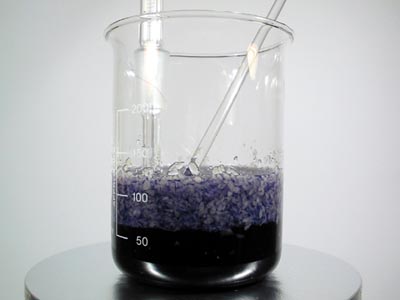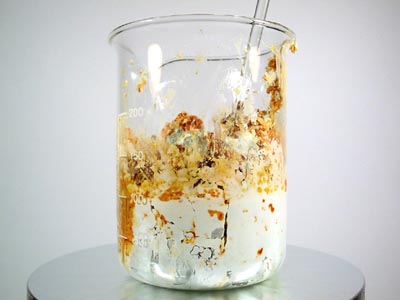
The other issue I have is that my yield does not look like it is going to be very good. I haven't had a chance to filter it yet, but it looks like I have less than 10 grams in my final h2o/styphic acid solution at room temperature (in about 700 ML of h2o). Where did I go wrong? Is Roscoe around on the board to answer questions about his method? Has anyone had these low yield issues? Please ask me questions to see if you can figure out where I am going wrong.
I followed Roscoe's method and quantities EXACTLY. I reacted with H2SO4, 50 ML with 10 Grams of Resorcinol powder. It reacted into a "strawberry milk shake". I then followed to procedure to nitrate with 20 ML of 70% HNO3 and then another 20 ML of 95% HNO3. All the while I watched my temps. I got a lot of foam and stirred it down when the temp went down to 35 or 40, which caused it to rise again. This happened two times and then the temperature stayed at around 35, then as it sat, it dropped into the 20's and I let it sit another 30 minutes. I then followed the final parts as he describes for harvesting the material and cleaning it, and yet I have this pathetic yield.
Please help.
Thanks,
Joel




 It has already been discussed here several times from
different materials. Here is a popular one :
It has already been discussed here several times from
different materials. Here is a popular one :